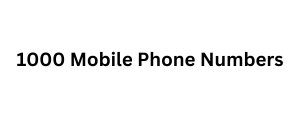How to use the power of archetypes in marketing
Sigmund Freud was one of the first psychologists to notice the influence of the unconscious layers of the psyche on human actions. The outstanding scientist believed that unconscious motives are personal in nature. Carl Gustav Jung went further: he claimed that the unconscious is divided into personal and collective. The personal is formed by a person’s lifetime experience. The collective unconscious is formed in the process of upbringing and socialization. Jung said that the collective unconscious is a set of archetypes.
What are archetypes?
An archetype is a mental structure through which people’s accumulated experience is manifested and transmitted. For example, no one has ever seen a living wizard. However, thanks to the Wizard archetype, when this character is mentioned, representatives of different cultures have practically the same image in their heads: an elderly man with a beard, dressed in a cape, robe or cloak, almost always wearing a headdress, a staff, a bag, books, and magical attributes. The number of archetypes is infinite. Some of them are transcultural, others exist only in the collective unconscious of representatives of certain cultures or peoples. The following are among the universal archetypes.
A Telegram database usually contains information about Telegram users, such as their phone numbers, usernames, or group memberships. This data telegram database is sometimes used for marketing, contacting people, or analyzing trends. But, gathering and using this data without clear permission can break privacy rules like GDPR and Telegram’s own rules, which don’t allow sending unwanted messages or collecting data without consent.
How Brands Use Archetypes in Marketing Campaigns
Businesses consciously or unconsciously exploit the concept of archetypes when building relationships with consumers. Consider the examples below.At the Oscars ceremony, for example, the Lego company presented actors with statues assembled from Lego pieces. This is just one example of the exploitation of creativity motives in the Lego Group advertising campaigns. The company’s product promotes the development of creative abilities. This is what marketers emphasize.
How to Use Archetypes in Corporate Storytelling
People are more receptive to interesting stories than to facts and logical reasoning. have compared the electrical activity of the human brain when listening to fairy tales and scientific research reports. Archetypes are also easier to use when you tell stories than when you list numbers. You don’t need to attach sensors to a person’s head to understand this.
As noted above, archetypes are the contents of the collective unconscious. When people hear interesting and understandable stories, some of the what is crunchbase? how do i use it? information goes straight to the subconscious. There, the received data activates archetypal energies, and now the client is putting the most useful yogurt with live bifidobacteria for his children into the basket. Don’t even try to tell him that evidence-based medicine does not confirm the benefits of consuming such products. People perceive facts and figures on a rational level. Consciousness does not always allow factual information to pass to the unconscious level.
Why do we need archetypes in marketing?
According to Jung, archetypes constantly determine people’s motivation. The collective unconscious influences human decisions, including the choice of certain products. Of course, human behavior is determined not only by archetypes. For example, when choosing a car, a person rationally evaluates the characteristics of the models. However, the unconscious layers of the psyche are more archaic in the context of human phylogenesis. Therefore, the collective unconscious influences human behavior almost more than his rationality.
For example, every smoker knows perfectly well about the harm of tobacco, but still takes out a cigarette and takes a drag with pleasure. Consciousness retreats under the onslaught of the unconscious desire for death or . Archetypes in advertising work the same way. You can appeal to a man’s consciousness as much as you like, telling about the benefits of antioxidants. All the same, appealing to the unconscious works better.
Archetype of the Philistine
This is a very important archetype for marketers. People consciously and unconsciously strive to be like everyone else. Americans even have an a complete list of unit phone numbers idiom that no salesperson can ignore: keeping up with the Joneses. If the Joneses bought a new car, you should buy the same, otherwise forget about social success. The desire to be like everyone else is often used to promote services. For example, MTS’s advertising campaign is built on this.
Archetype Explorer
This is a typically masculine archetype, which is why it is actively exploited by men’s brands. Endless prairies, galloping horses, evenings by the fire – the theme of freedom has become central to advertising campaigns for a product that is dangerous to health. The following ad features two archetypes at once. However, care and service are dominant here. Marketers successfully exploit the main motive of people under the influence of the archetype: if you want to properly care for your loved ones, choose the right product. Another example of using two archetypes at the same time. And yet, the cookie ad is dominated by the desire to return to the lost paradise of childhood. Since this is impossible, the target audience will at least try to reproduce their model of happiness for children.
Leonid Arkadyevich plays the role successfully. The buffoon may have a sad look, but his appearance makes people around him smile and laugh. In advertising, marketers try to tie the product to the image of a clown.


